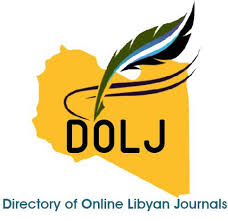Association of ABO/Rh Blood Group with Hypertension in Pre and Postmenopausal Libyan women
DOI:
https://doi.org/10.54361/LJM18.09Keywords:
ABO blood group, Rh blood group, hypertension, pre-menopausal, post-menopausalAbstract
BACKGROUND AND AIM: Hypertension is a prevalent and significant public health issue worldwide, affecting a substantial portion of the population. While various risk factors have been implicated in the development of hypertension, including genetics, lifestyle, and hormonal changes, the role of ABO/Rh blood groups in hypertension remains underexplored, particularly in different stages of Libyan women’s life. This research study aimed to investigate the potential association between ABO/Rh blood groups and hypertension in both pre- and post-menopausal Libyan women.
METHODOLOGY: A cross sectional study was conducted over a four-month period on a diverse cohort of women aged 35 to 75 years. It involved a total of 200 hypertensive women divided into pre- (n=100) and post-menopausal (n=100) groups. It took place at Tripoli University Hospital, Tajoura Heart Centre and Total Care Clinic. Data were collected through structured interviews, clinical examinations, and blood sample analyses. Blood pressure (BP) measurements and blood group typing were performed using standard medical procedures. A statistical analysis was performed using SPSS program version 26.0.
RESULTS: The distribution of ABO blood groups shows that blood group O is the most prevalent blood group among samples (58% in the pre-menopausal and 41% in post-menopausal hypertensives), whereas blood group AB is the least prevalent (only 9% in the pre-menopausal and 7% in post-menopausal hypertensives). One hundred and eighty-one (90.5%) were Rh +ve. Analysis of data revealed significant differences in age distribution as well as in the percentages of Rh +ve and Rh -ve blood groups among pre- and post-menopausal women (p<0.05). However, there was no statistically significant difference in the mean values of BP indices between ABO/Rh blood groups (p>0.05).CONCLUSION: This study showed that ABO/Rh blood group system does not significantly affect BP indices among the pre-menopausal and post-menopausal women. Findings of present study also illustrated that age could potentially influence the connection between blood groups and hypertension. Additionally, among ABO/Rh blood groups, the most observed type was 'O.' However, further investigation is necessary to validate these initial results and better understand the underlying mechanisms behind this relationship
Downloads
References
Iqbal, A. M., & Jamal, S. F. (2022). Essential Hypertension. StatPearls [Internet]. Treasure Island (FL): StatPearls Publishing.
Oparil, S., Acelajado, M. C., Bakris, G. L., Berlowitz, D. R., Cífková, R., Dominiczak, A. F., Grassi, G., Jordan, J., Poulter, N. R., Rodgers, A., & Whelton, P. K. (2018). Hypertension. Nature reviews. Disease primers, 4, 18014.
Farhadi, F., Aliyari, R., Ebrahimi, H. et al.(2023). Prevalence of uncontrolled hypertension and its associated factors in 50–74 years old Iranian adults: a population-based study. BMC Cardiovasc Disord. 23, 318
Mills, K. T., Stefanescu, A., & He, J. (2020). The global epidemiology of hypertension. Nature reviews. Nephrology, 16(4), 223–237.
Beaney, T., Ster, A. C., Poulter, N. R., Xia, X., Fageh, H., Msalam, O., Derbi, H. A., Osman, A. M., Aghilla, M., Bettamer, Z. A., Fhail Alboum, M. O., Elsari, O. T., Elhemali, E. M., Zidan, R. A., Musbah, A., Eltawell, H., Ben Masaud, H. A., & MMM Data collectors (2020). May Measurement Month 2018: an analysis of blood pressure screening in Libya. European heart journal supplements : Journal of the European Society of Cardiology, 22 (Suppl H), H77–H79.
Maas, A. H., & Franke, H. R. (2009). Women's health in menopause with a focus on hypertension. Netherlands heart journal : monthly journal of the Netherlands Society of Cardiology and the Netherlands Heart Foundation, 17(2), 68–72.
Garovic, V. D., Bailey, K. R., Boerwinkle, E., Hunt, S. C., Weder, A. B., Curb, D., Mosley, T. H., Jr, Wiste, H. J., & Turner, S. T. (2010). Hypertension in pregnancy as a risk factor for cardiovascular disease later in life. Journal of hypertension, 28(4), 826–833.
Pérez-López, F. R., Larrad-Mur, L., Kallen, A., Chedraui, P., & Taylor, H. S. (2010). Gender differences in cardiovascular disease: hormonal and biochemical influences. Reproductive sciences (Thousand Oaks, Calif.), 17(6), 511–531.
Zhou, Y., Zhou, X., Guo, X., Sun, G., Li, Z., Zheng, L., Yang, H., Yu, S., Li, W., Zou, L., & Sun, Y. (2015). Prevalence and risk factors of hypertension among pre- and post-menopausal women: a cross-sectional study in a rural area of northeast China. Maturitas, 80(3), 282–287.
Abegaz S. B. (2021). Human ABO Blood Groups and Their Associations with Different Diseases. BioMed research international, 6629060.
Chandra, T., & Gupta, A. (2012). Association and Distribution of Hypertension, Obesity and ABO Blood groups in Blood Donors. Iranian journal of pediatric hematology and oncology, 2(4), 140–145.
Hiteshkumar K Solanki, Omnath Yadav & Anita J Gojiya. (2021). Relationship between hypertension and ABO blood groups: A cross-sectional study. MedPulse International Journal of Physiology 20(3) ,22-25
Kaur, Maninder. (2014). Association between ABO Blood Group and Hypertension among Post-menopausal Females of North India. Anthropologist. 17. 677-680.
Taher, Yousef & Emhemed, H.M. & Tawati, Ahmed. (2009). The menopausal experience of Libyan women. Jamahiriya Medical Journal. 9. 184-190.
Shah, H., Majmudar, . F., Shah, . S. & Malhotra, . S. (2023) Comparison of blood pressure readings among premenopausal and postmenopausal women and evaluation of factors associated with hypertension in
women. Natl J Physiol Pharm Pharmacol, 13 (7), 1385-1390.
Kotila, T. R., Odukogbe, A. A., Okunlola, M. A., Olayemi, O., & Obisesan, K. A. (2005). The pregnant Rhesus negative Nigerian woman. The Nigerian postgraduate medical journal, 12(4), 305–307.
Okeke, T. C., Ocheni, S., Nwagha, U. I., & Ibegbulam, O. G. (2012). The prevalence of Rhesus negativity among pregnant women in Enugu, Southeast Nigeria. Nigerian journal of clinical practice, 15(4), 400–402.
Ekanem, U. S., Opara, D. C., & Akwaowo, C. D. (2013). High blood pressure in a semi-urban community in south-south Nigeria: a community-based study. African health sciences, 13(1), 56–61.
Chima, O., Mohammed, T.B., Aisha, K., Alhaji, S.A., Muhammad, B.M., & Kwaru, A.H. (2012). ABO and rhesus blood groups among blood donors in Kano, North-Western Nigeria. Nigerian Journal of Basic and Clinical Sciences, 9, 11.
Shekhar Gogoi, H., & Bora, B. (2016). A Cross Sectional Study of Prevalence of ABO and Rh Positive Blood Groups among the Pre-menopausal and Post-menopausal Women in Relation to Hypertension in Kamrup (Metropolitan) District. Journal of Dental and Medical Sciences, 15(4), 47–54.
O'Donnell, J., & Laffan, M. A. (2001). The relationship between ABO histo-blood group, factor VIII and von Willebrand factor. Transfusion medicine (Oxford, England), 11(4), 343–351.
Haque, K. M., & Rahman, M. (2000). An unusual case of ABO-haemolytic disease of the newborn. Bangladesh Medical Research Council bulletin, 26(2), 61–64.
Ojeka, S. O., Dapper, D. V., & Egbejimi, A. M. (2021). Influence of ABO and Rhesus Blood Group on Blood Pressure and Hypertension in Bayelsa State. Asian Journal of Research in Medical and Pharmaceutical Sciences, 10(1), 33–40.
Siddiqui N I, Soni A, Gaur V B, Akhani P, Shoeb M (2021). ABO Blood Type does not Influence Blood Pressure Levels in Healthy Indian Adolescents. RABMS, 7(1):46-52
Jawed, S., Zia, S., & Tariq, S. (2017). Frequency of different blood groups and its association with BMI and blood pressure among the female medical students of Faisalabad. JPMA. The Journal of the Pakistan Medical Association, 67(8), 1132–1137.
Enawgaw, B., Aynalem, M., & Melku, M. (2022). Distribution of ABO and Rh-D Blood Group Antigens Among Blood Donors in the Amhara Regional State, Ethiopia. Journal of blood medicine, 13, 97–104.
GAO Jiang-ling, CUI Ze, PAN Li. (2021). Association of ABO blood group with hypertension among Han population in Hebei
Downloads
Published
Issue
Section
License
Copyright (c) 2024 Mahmoud M. Ashawesh, *, Olla A. Bashimam, , Falak F. Jebali (Author)

This work is licensed under a Creative Commons Attribution-NonCommercial-NoDerivatives 4.0 International License.
Open Access Policy
Libyan journal of medical Research (LJMR).is an open journal, therefore there are no fees required for downloading any publication from the journal website by authors, readers, and institution.
The journal applies the license of CC BY (a Creative Commons Attribution 4.0 International license). This license allows authors to keep ownership f the copyright of their papers. But this license permits any user to download , print out, extract, reuse, archive, and distribute the article, so long as appropriate credit is given to the authors and the source of the work.
The license ensures that the article will be available as widely as possible and that the article can be included in any scientific archive.
Editorial Policy
The publication of an article in a peer reviewed journal is an essential model for Libyan journal of medical Research (LJMR). It is necessary to agree upon standards of expected ethical behavior for all parties involved in the act of publishing: the author, the journal editorial, the peer reviewer and the publisher.
Any manuscript or substantial parts of it, submitted to the journal must not be under consideration by any other journal. In general, the manuscript should not have already been published in any journal or other citable form, although it may have been deposited on a preprint server. Authors are required to ensure that no material submitted as part of a manuscript infringes existing copyrights, or the rights of a third party.
Authorship Policy
The manuscript authorship should be limited to those who have made a significant contribution and intellectual input to the research submitted to the journal, including design, performance, interpretation of the reported study, and writing the manuscript. All those who have made significant contributions should be listed as co-authors.
Others who have participated in certain substantive aspects of the manuscript but without intellectual input should only be recognized in the acknowledgements section of the manuscript. Also, one of the authors should be selected as the corresponding author to communicate with the journal and approve the final version of the manuscript for publication in the LJMR.
Peer-review Policy
- All the manuscripts submitted to LJMR will be subjected to the double-blinded peer-review process;
- The manuscript will be reviewed by two suitable experts in the respective subject area.
- Reports of all the reviewers will be considered while deciding on acceptance/revision or rejection of a manuscript.
- Editor-In-Chief will make the final decision, based on the reviewer’s comments.
- Editor-In-Chief can ask one or more advisory board members for their suggestions upon a manuscript, before making the final decision.
- Associate editor and review editors provide administrative support to maintain the integrity of the peer-review process.
- In case, authors challenge the editor’s negative decision with suitable arguments, the manuscript can be sent to one more reviewer and the final decision will be made based upon his recommendations.













